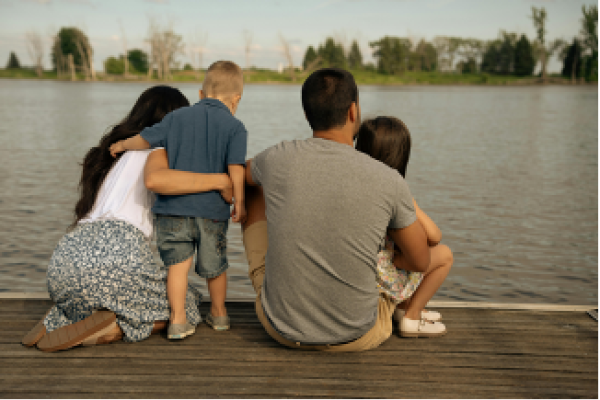In 2016, Tayyaba, a 10-year-old maid, was rescued from the home of her abusive employer in Islamabad, Pakistan’s capital. Photos of her bruised and bloodied face went viral on social media and sparked public outrage in Pakistan. However, Tayyaba’s case is not an isolated incident. In Pakistan, there are estimated to be as many as 14 million child labourers aged under 15.
This blog first outlines Pakistan’s obligations under international law and its domestic legal framework in relation to child labour. It then discusses Tayyaba’s case and uses it to illustrate the challenges Pakistan faces in meeting its obligations concerning child labour under international law.
Pakistan’s obligations concerning child labour under international law
Pakistan is a state party to the UN Convention on the Rights of the Child (UNCRC) which it ratified in 1990. Among the obligations, UNCRC creates for Pakistan is the requirement to ensure that children are protected from all forms of economic exploitation and hazardous or harmful work (see Article 32). Additionally, Pakistan has ratified the International Labour Organisation (ILO) Minimum Age Convention and Worst Forms of Child Labour Convention.
The Minimum Age Convention sets 15 as the general minimum age for employment (13 for light work) and 18 for hazardous work. However, it also permits countries to set a temporary minimum age of 14 for employment (and 12 for light work) if its educational infrastructure and economy are insufficiently developed. Similarly, the minimum age for hazardous work can be reduced to 16. The Worst Forms of Child Labour Convention prohibits all forms of slavery (including debt bondage) and “work which could harm children’s health and/or expose them to danger.”
Pakistan’s domestic legal framework for child labour law
The 18th Amendment to Pakistan’s Constitution, passed in 2010, devolved all child welfare and labour issues to the provincial level. However, until a province repeals or adopts a replacement law, pre-existing federal laws on children’s rights remain in effect. Consequently, laws on child labour vary according to where the child is in Pakistan (there are four provinces in Pakistan plus the Islamabad Capital Territory (ICT), which is a federal territory).
One example of this is that under federal law the minimum age for employment is 14. This is also the case in the provinces of Khyber Pakhtunkhwa and Sindh, however, in Punjab, it is 15. Another example is that the federal-level 1991 Employment of Children Act (ECA) sets the minimum age for hazardous work as 15 (which is not compliant with international law). However, at the provincial level in Khyber Pakhtunkhwa, Sindh, and Punjab the minimum age for hazardous work is 18 (which is compliant with international law).
A final example relates to child domestic labour. On 4 August 2020, Pakistan’s Cabinet amended the ECA to add domestic labour to the list of occupations that it is prohibited for children to work in. Due to the 18th Amendment this currently only applies to ICT. It could be adopted by other provinces by way of an assembly resolution, but none have yet done so. However, the Punjab Domestic Workers Act 2019 prohibits the employment of children (under the age of 15) in households in any capacity.
Table: Minimum age for child work and hazardous work by province in Pakistan

The reality of child labour in Pakistan
The exact number of child labourers in Pakistan is not known. This is, in part, because only 34 percent of children are registered at birth. As a result, it is hard to establish both how many children there are in Pakistan and the age of those working. Pakistan’s only completed National Child Labour Survey, conducted in 1996, recorded 3.3 million child labourers (a second survey begun in 2019 but is not yet completed). However, unofficial estimates by non-government organisations place the number of child labourers to be significantly higher at around 10 to 14 million.
According to the ILO domestic labour is when underage children carry out hazardous household tasks (e.g., using dangerous objects like knives or hot pans) and/or work in slavery-like conditions. Child domestic labour is particularly hard to obtain accurate information about because it happens in private spaces. Additionally, a substantial proportion of Pakistani society does not see household work as constituting ‘labour’ for a child. Notably, as discussed above, domestic labour was only recently added to the list of occupations prohibited for children under the ECA. Children engaged in domestic labour in Pakistan are disproportionately girls from rural areas. Familial poverty is the main ‘push’ factor for children to work as domestic labourers (including to pay off family debts, finance a sibling’s education, and fund doweries). In 2004 the ILO estimated there were 264,000 child domestic labourers in Pakistan.
Child domestic labourers are also at high-risk for other harm. Many relocate from rural to urban settings (where most domestic labour takes place) and live in their employers’ homes far away from their families. Domestic labour happens behind closed doors and children are often dependent on employers for basic needs such as food, and accommodation. This makes child domestic labourers particularly vulnerable to abuse (psychological, sexual, and physical), debt bondage (i.e., working to pay for the cost of their food, accommodation, etc.), and deprivation of other rights (e.g., the rights to play, education and healthcare).
Violence against child labourers in Pakistan typically only comes to light in cases involving extreme brutality. Between January 2019 and 2020, around 300 child labourers were rescued by the Child Welfare and Protection Bureau in Punjab alone. However, in this period only 51 cases of violence against child labourers were reported by Pakistani media.

Unofficial estimates suggest there are up to 14 million children engaged in child labour in Pakistan.
The Tayyaba case
Among the cases that did garner media attention was the case of Tayyaba. The 10-year-old was employed as a maid for a judge, Raja Khurram Ali Khan, and his wife, Maheen Zafar. Tayyaba worked for the couple for two years before neighbours alerted police to her abuse in December 2016. Photographs of Tayyaba shared online show her bruised and bloodied face and sparked public outrage. According to the Pakistan Institute of Medical Science, other injuries included burns on her hands and feet.
Tayyaba’s background was typical of a child domestic worker in Pakistan. Her family was struggling to make ends meet. Her father lost a finger in an accident and was unable to work. Her mother needed surgery. Tayyaba was sent to work in Islamabad, a four-hour drive from where her family lived in a village near Faisalabad in Punjab province.
Khan and his wife were both charged with “cruelty to a child” under Section 328-A of the Pakistan Penal Code (they were not charged with employing a minor because, at the time, domestic labour was not a prohibited profession under the ECA). However, in 2017, Tayyaba’s father attempted to have the charges against Khan and Zafar dropped by offering his formal ‘forgiveness’. In Pakistan, criminal cases are filed by victims or their families, not the state. Plaintiffs can choose to drop cases (even for serious charges) by pardoning the accused “in the name of God.” Critics of this right to ‘forgive’ say that such pardons are often the result of a financial payment to victims (or their families) and enable the wealthy to avoid punishment.
In Tayyaba’s case, the court rejected her father’s pardon and took suo moto notice of the case (i.e., when a court acts on its own accord without request from involved parties) warning that: “no agreements can be reached in matters concerning fundamental human rights.” In April 2018, Islamabad High Court found both the accused guilty and sentenced them to one-year in prison and a 50,000 rupee fine (approximately $750). In June 2018, that sentence was increased to three years by the same court. In January 2020, it was again reduced to one-year by Pakistan’s Supreme Court.
Although Tayabba’s father initially told officials that the judge and his wife had not hurt his daughter and that she had fallen down the stairs, he later admitted to the BBC that he had lied and that Khan had paid for his lawyer and promised to get him a house and a car as a “token of sympathy”.

Child domestic labour happens behind closed doors making children particularly vulnerable to abuse, debt bondage, and deprivation of other rights.
Issues highlighted by the Tayyaba case
Pakistan faces serious challenges in tackling the problem of child domestic labour. This section highlights three key issues using the Tayyaba case to illustrate them.
Firstly, the high-profile case of Tayyaba and, later, Zohra Shah (an eight-year-old maid who was beaten to death in 2020 after accidentally releasing her employers’ parrots) led to domestic labour being added the list of prohibited occupations for children under Part 1 of the ECA. The move was welcomed by children’s rights activists in Pakistan. However, as already discussed, because of the 18th Amendment this addition to the ECA currently only automatically applies to the ICT. Therefore, child domestic labour is not prohibited in other provinces of Pakistan (except for in Punjab due to the 2019 Punjab Domestic Workers Act). Beyond the legality of child domestic labour, this points to a broader problem in Pakistan. Because child labour laws vary between provinces this creates uncertainty in the law (particularly when children are sent to other provinces to work) and contributes to a lack of enforcement.
Secondly, Tayyaba’s case shows how economic inequalities drive child labour in Pakistan. Like most child labourers, her family was poor. According to the World Bank in 2018, 21.9 million people in Pakistan lived below the poverty line. The Covid-19 pandemic, devastating floods in the monsoon season of 2022, and poor economic management have exacerbated the gap between the rich and poor. Between January 2022 and 2023, the price of basic goods rose 41 percent. According to UNICEF 22.8 million children (equivalent to 44 percent of children aged 5-16) do not attend school in Pakistan. When families depend on child labour for their survival, legislation alone is unlikely to end the practice.
Thirdly, Tayyaba’s case illustrates how the right to ‘forgive’ the accused can be utilised by the wealthy to try and avoid punishment for their crimes. This is particularly relevant to child labour because the families of underage workers are disproportionately likely to be poor compared to their employers. Therefore, even if laws are passed to restrict child labour, they are unlikely to be enforced if ‘forgiveness’ can be bought by those that breach them.
For a more in-depth analysis of the legal system for child protection in Pakistan, you can download my thesis here.







